Farming has come a long way since the days of producing crops on open fields. Today, farmers have various options when it comes to growing their crops. One of the most popular options is using glass houses, also known as polytunnels. Polytunnels are plastic, or polythene sheeting stretched over a metal frame. They come in various sizes, making them suitable for small-scale or large-scale farming. Let’s check out how to start Polytunnel farming below.
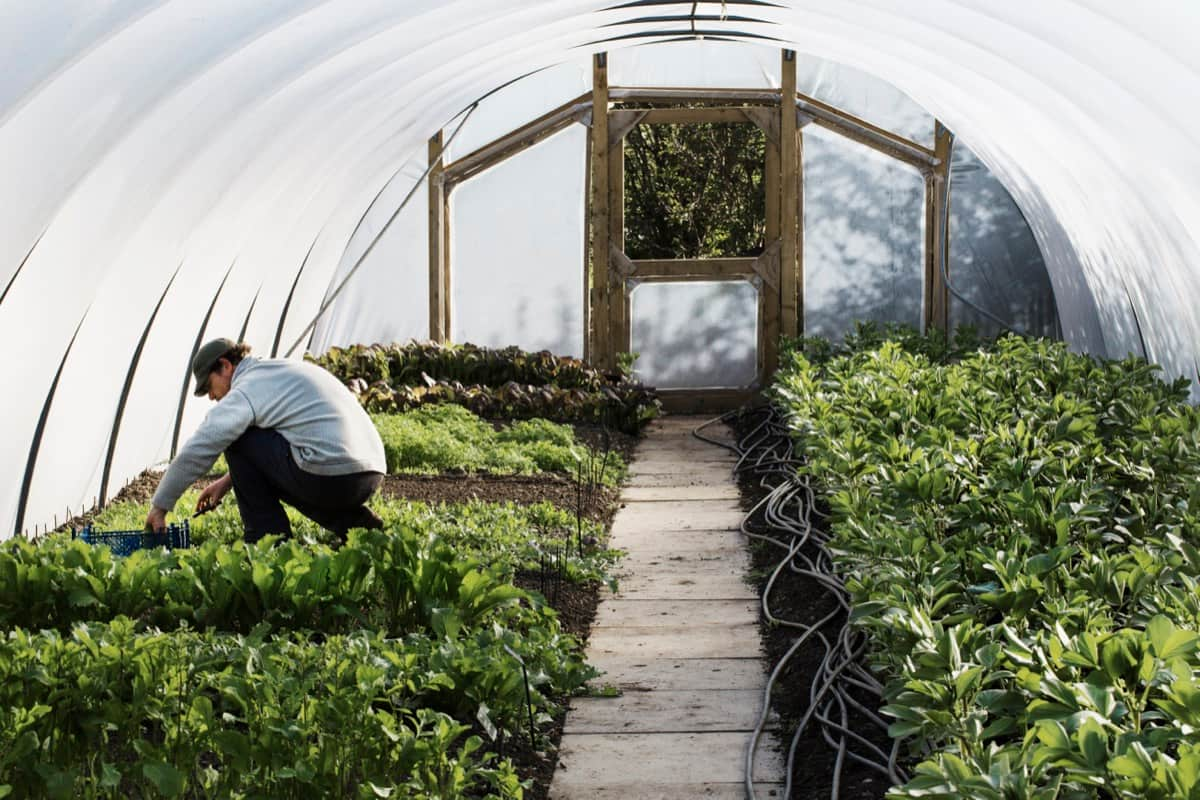
One of the most notable benefits of employing polytunnels is that they can lengthen the growing season, helping farmers to produce crops that would otherwise be impossible to cultivate in their area. Compared to traditional greenhouses, polytunnels are more affordable, easier to set up, and require less maintenance.
Polytunnels also offer more flexibility in crop selection and growing methods, as they can quickly adapt to different growing conditions. Another advantage of polytunnels is that they offer more control over the growing environment. They can be equipped with irrigation systems, heaters, and shading to create the perfect conditions for growing crops. It can lead to higher yields and better-quality produce.
In this blog post, we will also discuss the benefits and drawbacks of each and provide tips for beginners looking to start their polytunnel farm. So, Suppose you are a beginner or an experienced farmer looking to expand your crop-growing options. In that case, this guide will help you to choose the best option for your needs and start growing crops in style.
In case you missed it: Pig Farming in Zimbabwe: Step-by-Step Starting Guide, Business Plan, Breeds, Setup Cost, and Profit
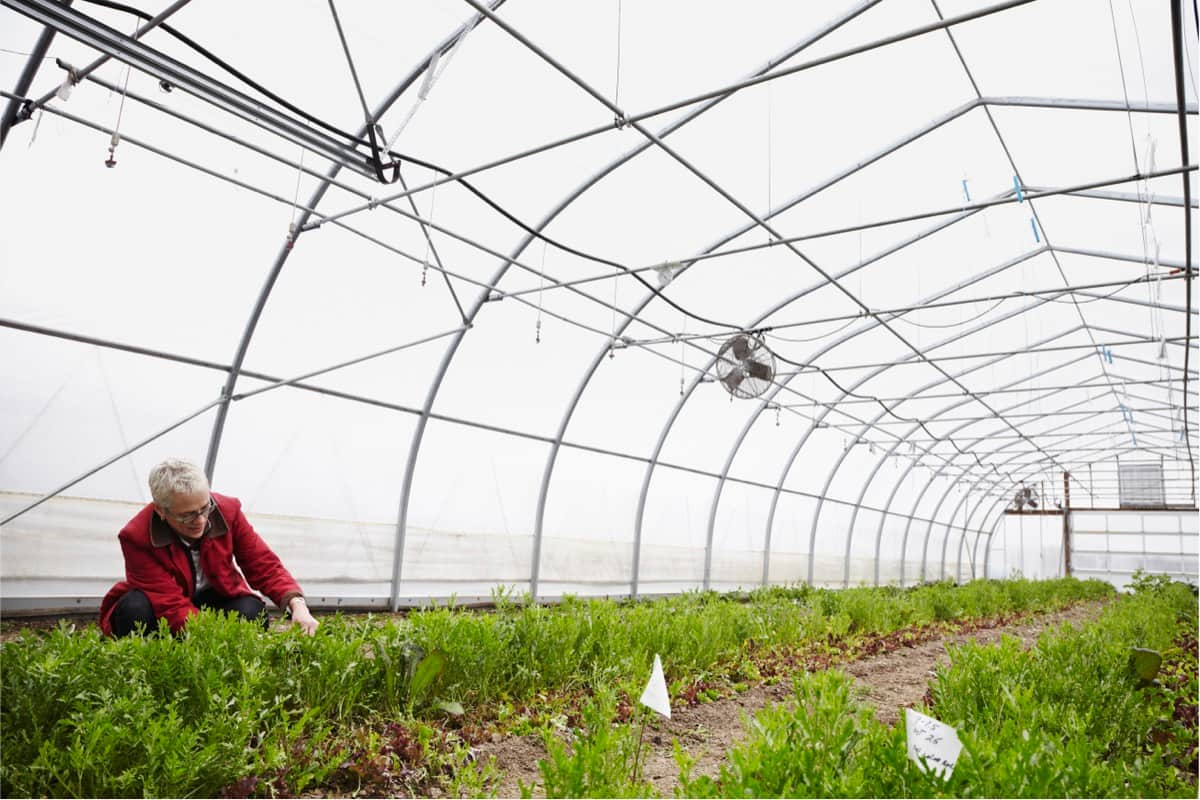
How to start Polytunnel farming
What is a Polytunnel?
A polytunnel is a type of greenhouse made of polyethylene shaped like a long, semi-circular tunnel. It creates a microclimate with higher temperatures and humidity, allowing for cultivating fruits and vegetables out of season and providing protection from the elements. Polytunnels are also temporary structures that are easy to move or dismantle. They can be used for various purposes, such as growing herbs and salads in small polytunnels or full food crops in large ones.
They are also less expensive and simpler to erect and maintain than greenhouses. A polytunnel is a type of greenhouse made of plastic or polythene sheeting stretched over a metal frame. These are typically used for growing fruits, vegetables, and other plants in an enclosed, controlled environment. Polytunnels can extend the growing season, allowing farmers to grow crops that would not usually be possible in their area.
They can also be equipped with irrigation systems, heaters, and shading to create the perfect conditions for crops grown, leading to higher yields and better-quality produce. The polytunnels are more affordable, easier to set up, and require less maintenance than traditional greenhouses; and also offer more flexibility in crop selection and growing methods, as they can be easily adapted to different growing conditions.
In case you missed it: Key Rules to Start Organic Farming in Denmark: Business Plan, Cost, Profit, and Management
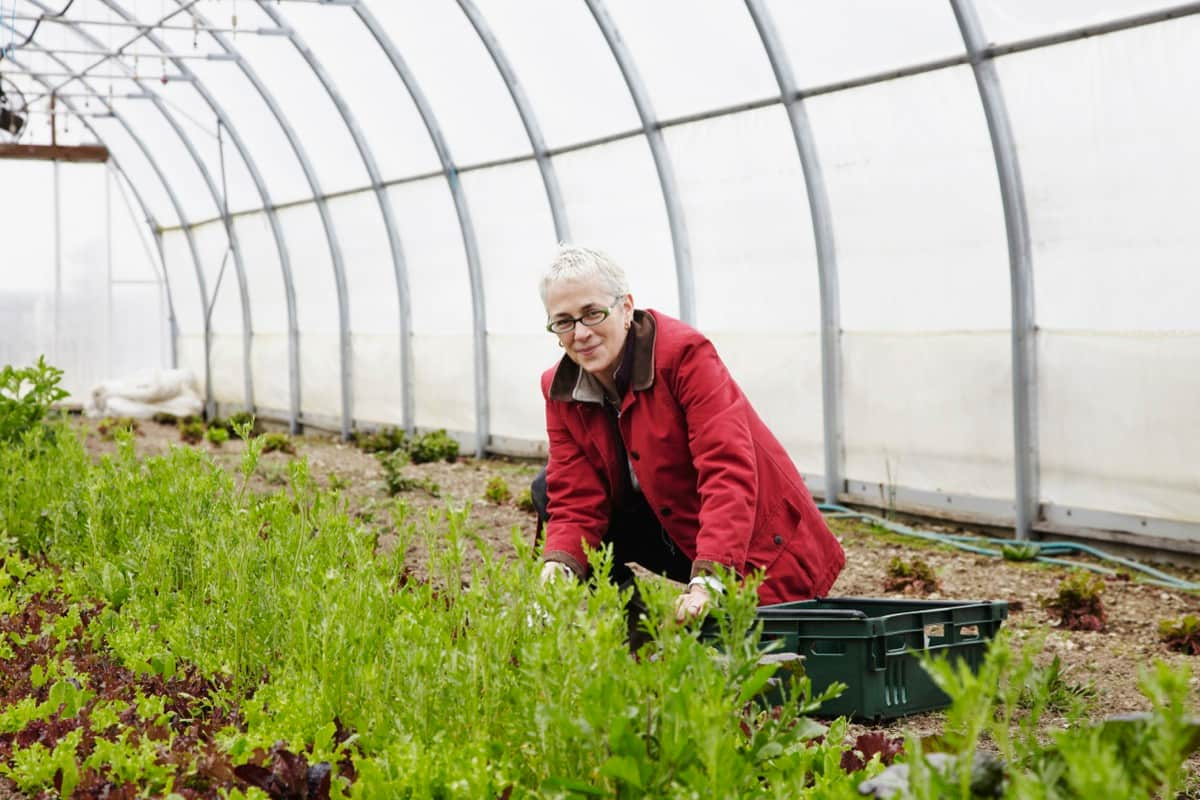
Benefits of using Polytunnel for growing crops
A polytunnel is a type of greenhouse that is made from a durable plastic material. Gardeners and farmers typically use these structures to extend the growing season and protect crops from harsh weather conditions. There are many benefits to using a polytunnel, including the following:
- Increased crop yields: Polytunnels provide a warm and sheltered environment for plants to grow in, which can result in higher crop yields. It is especially beneficial for farmers looking to extend the growing season and produce crops in areas with a shorter growing season.
- Extend the growing season: Polytunnels can be used to extend the growing season for plants by protecting them from frost and other weather conditions. It allows for earlier planting and more prolonged harvesting, increasing crop yields and profitability.
- Increased control over growing conditions: Polytunnels allow for greater control over temperature, humidity, and light levels, which can be adjusted to suit the specific needs of different plants. It can lead to improved growth and yield and a reduction in the maturity time and effort required to care for the plants.
- Protection from pests and diseases: Polytunnels provides a barrier between plants and the outside environment, which can help protect crops from pests and diseases. It is especially beneficial for farmers who are growing crops prone to pest and disease damage.
- Water conservation: Polytunnels are designed to retain moisture in the soil, which can help reduce water usage and conserve resources. It is especially beneficial for farmers growing crops in areas with limited water resources.
- Cost-effective: Polytunnels are relatively inexpensive to build and maintain, making them a cost-effective option for farmers and gardeners. They are also easy to construct and can be assembled by most people with basic DIY skills.
- Versatility: Polytunnels can be used for various crops, including microgreens, vegetables, fruits, and flowers. Plants can also be grown in pots, particularly for small gardens or balcony gardening.
- Affordability: Polytunnels are a cost-effective option for small-scale growers and those on a budget, as they are easy to construct using readily available and inexpensive materials, such as PVC pipe and polyethylene film. They are also less expensive to heat and maintain than traditional greenhouses, making them accessible to hobbyists, small farmers, and community gardens.
In case you missed it: Mahogany Farming in India: Cultivation Benefits, Production Cost, Profit, and Project Report
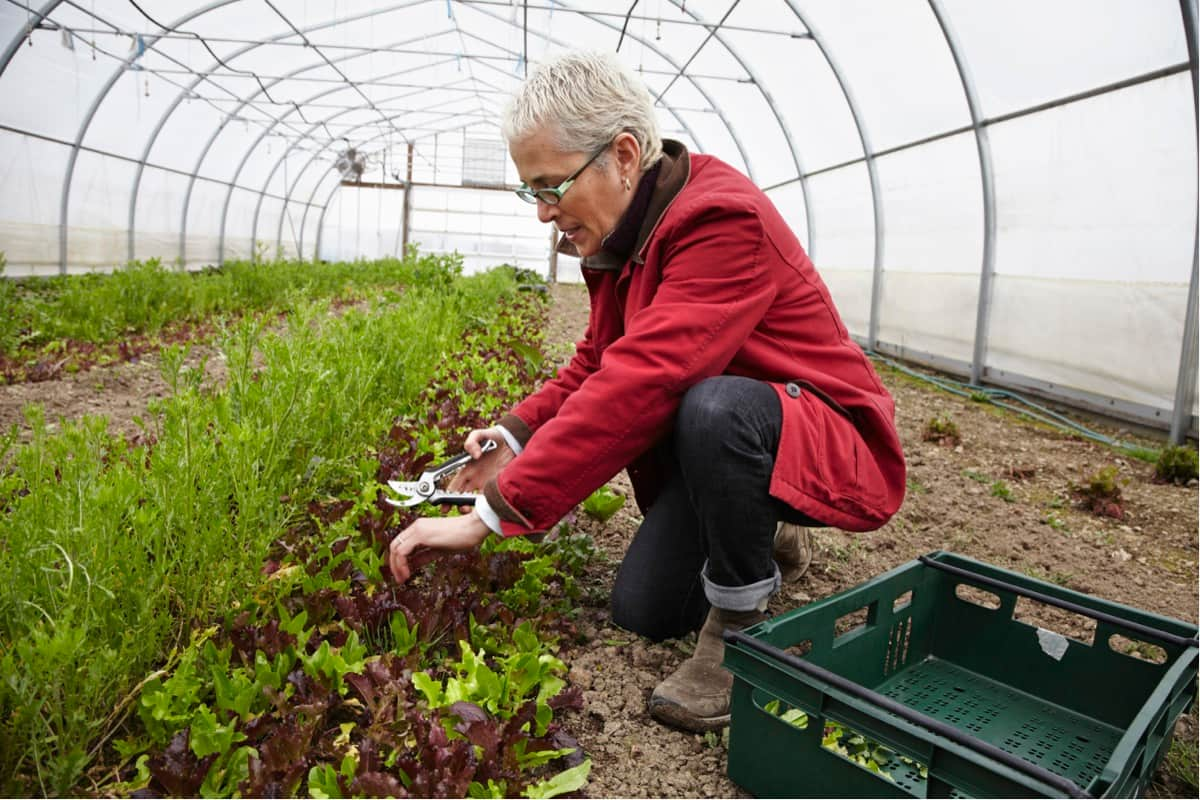
Different types of Polytunnels
- Freestanding polytunnels are typically made of metal or PVC pipe and covered with a plastic film. These can be set up anywhere and are not anchored to the ground.
- Attached are polytunnels to a building or other structure, such as a greenhouse.
- Walk-in polytunnels are large enough for a person to walk inside and include various features such as ventilation systems, irrigation systems, and grow lights.
- Smaller or hobby polytunnels are designed for small-scale gardening or hobby use. Mini polytunnels start with sizes 118 x 24 x 18 inches (300 x 60 x 45 cm) and similar
- Professional or commercial polytunnels are designed for large-scale commercial farming or gardening. These polytunnels can be customized to fit a specific need, with widths ranging from 16 to 30 feet (487 to 914 cm or more), lengths ranging from 30 to 90 feet (914 to 2700 cm or more), and heights around 8 to 10 feet (243 to 305 cm).
- The user can build DIY polytunnels with materials and instructions provided by the manufacturer.
- Quonset polytunnels are curved and often used for commercial crop production.
- Gothic polytunnels have a peaked roofs and are often used for growing taller plants, such as trees and shrubs.
- Multi-span polytunnels are made of multiple connected tunnels, allowing for larger growing areas.
- Hoop Houses polytunnel uses a series of hoops to support the plastic covering.
- High Tunnels are similar to hoop houses but are taller and are mostly used for commercial crop production.
- Cold Frames are smaller polytunnels that protect plants from frost and cold weather.
- Domestic garden polytunnels are structures used to protect and grow plants in a backyard or garden setting. They can range in size from small (100 x 78 x 78 inches/ 250 x 200 x 200 cm and 137 x 78 x 78 inches/ 350 x 200 x 200 cm) to medium (400 x 200 x 200 cm/ 157 x 78 x 78 inches and 800 x 400 x 200 cm/ 312 x 157 x 78 inches) to larger sizes, which can vary greatly but are generally smaller than commercial polytunnels. These structures allow for year-round gardening by creating a controlled environment for plants to grow, protecting them from harsh weather conditions and pests.
In case you missed it: Ways to Use Neem Oil in Plants: Benefits in Agriculture, Application Method in Garden, and Uses in Hydroponics
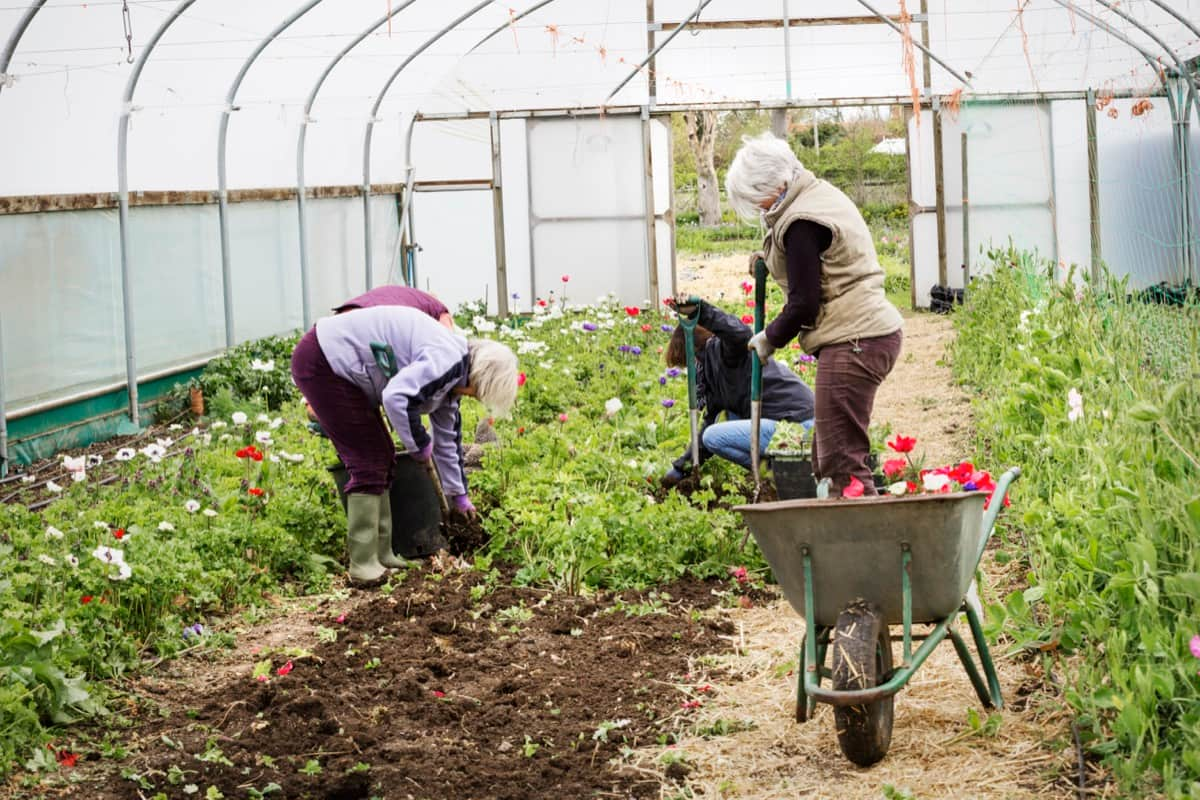
What to grow in Polytunnels?
- Vegetables: Many vegetables can be grown in a polytunnel, such as tomatoes, cucumbers, peppers, lettuce, and spinach.
- Fruits: Some fruits, such as strawberries, raspberries, and blueberries, can also be grown in a polytunnel.
- Herbs: Herbs, such as basil, parsley, and thyme, can be grown in a polytunnel, providing a controlled environment for them to thrive.
- Flowers: Many flowers can be grown in a polytunnel, including bedding plants, cut flowers, and perennials.
- Trees and shrubs: Some types of trees and shrubs can be grown in a polytunnel, providing they are not too large and that the Polytunnel is tall enough.
- Perennial Vegetables: Some perennial vegetables, such as asparagus, rhubarb, and artichoke, can also be grown in a polytunnel as it provides a controlled environment for them to thrive.
Types of frames used for Polytunnels
- Galvanized steel: These frames are made from steel coated with zinc to prevent rust and corrosion. They are durable and long-lasting but can be heavy and more expensive than other options.
- Aluminum: These frames are lightweight and rust-resistant, making them a popular choice for polytunnels. They are also more expensive than other options.
- PVC: These frames are made from plastic, are lightweight and are easy to assemble. They are also less expensive than other options but may not be as durable as steel or aluminum frames.
- Wood: These frames are made from wood, such as treated timber. They can be less expensive than other options but can rot or warp over time.
- Bamboo: These frames are made from a sustainable and renewable resource. They are lightweight, easy to work with, and may not be as durable as other frames.
In case you missed it: Pest and Disease Management in Sunflower: Causes, Symptoms, Chemical and Biological Control
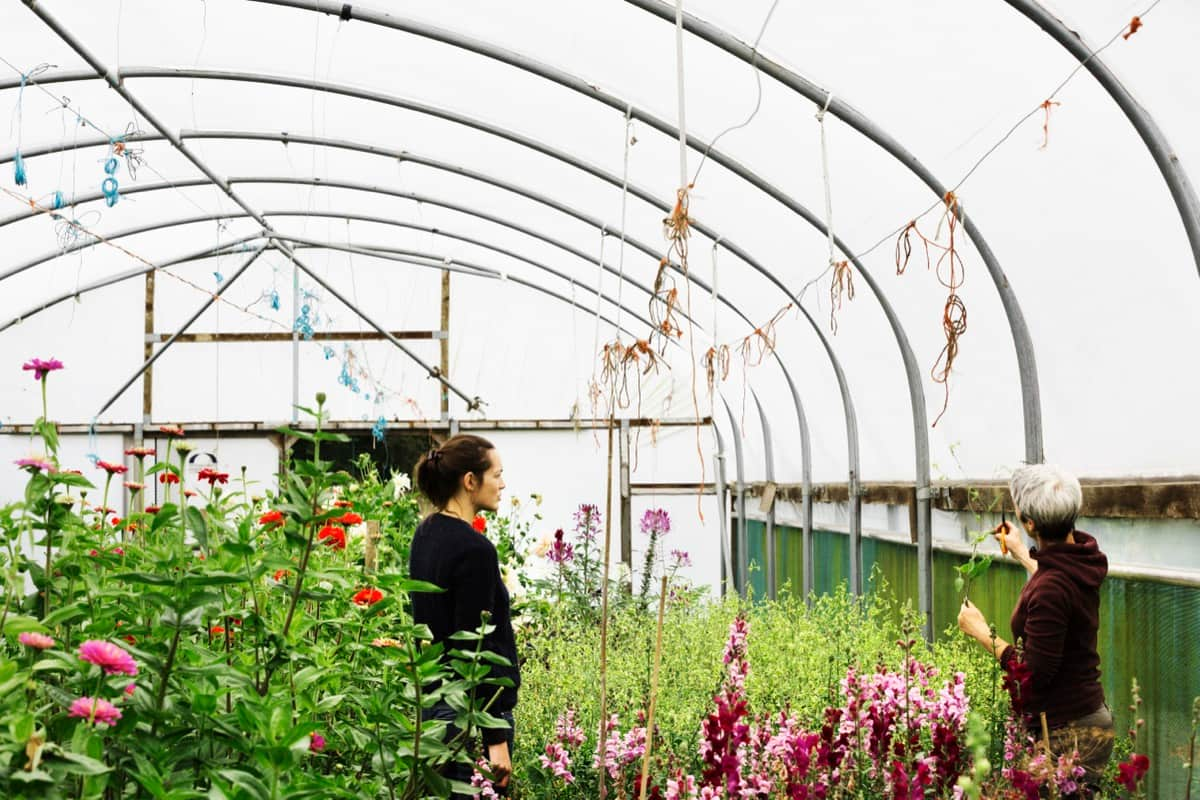
Types of coverings material for Polytunnels
- Polyethylene: This is the most common type of covering used for polytunnels. It is made from a type of plastic that is lightweight, durable, and easy to install. It comes in different thicknesses and UV treatments, some with a longer lifespan than others.
- Glass: Glass can be used as a covering for polytunnels, but it is heavy, expensive, and difficult to install. It does provide the best light transmission.
- Fiberglass: This type of covering is made from a combination of glass fibers and resin. It is lightweight and durable but expensive and difficult to install.
- Acrylic: This type of covering is made from a type of plastic that is similar to glass. It is lightweight, durable, and provides good light transmission but it can be expensive.
- Polycarbonate: This type of covering is made from plastic, similar to acrylic. It is lightweight, durable, and provides good light transmission but it can be expensive.
- Canvas: This type of covering is made from heavy-duty fabric. It is easy to install but may be less durable and long-lasting than other options.
How to Build Polytunnel: Installation
Building a polytunnel can be simple and straightforward with the right tools and materials. Here are the general steps for building a polytunnel:
- Choose a location: Pick a level and well-drained area in your garden that gets plenty of sunlight. It is the spot where you’ll put your Polytunnel.
- Prepare the site: Clear the area of any debris, rocks, or other obstacles. If necessary, level the ground with a rake or hoe.
- Assemble the frame: Put together the frame of the Polytunnel according to the manufacturer’s instructions. It will usually involve attaching the different pieces of the frame with bolts or other connectors.
- Anchor the frame: Once the frame is assembled, anchor it to the ground. It can be done using tent pegs, ground anchors, or other stakes to hold the frame securely.
- Install the covering: Unroll the covering material over the frame and secure it to the frame using bungee cords, clips, or other means provided by the manufacturer.
- Secure the openings: Secure the ends of the covering to the ground using sandbags, bricks, or other heavy objects. It will prevent the covering from flapping around in the wind.
- Install the door: Add a door or roll-up sides if the Polytunnel comes with one.
- Ventilation: Install vents or automatic vent openers if necessary, as they provide proper ventilation inside the Polytunnel.
Additionally, depending on the size of the Polytunnel, you may need a helper to assist you with the assembly, particularly when installing the covering.
In case you missed it: How to Start Rose Farming in the USA: A Step-by-Step Production Guide for Planting to Harvesting
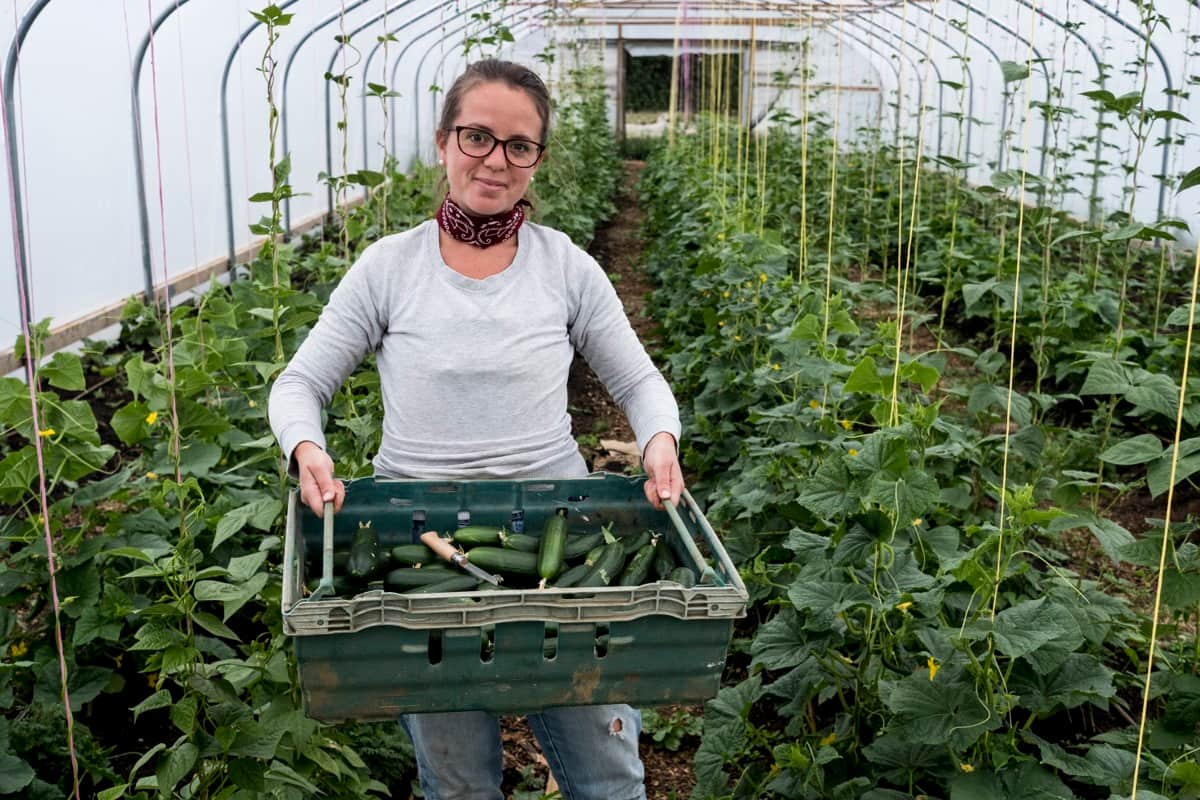
Maintenance of Polytunnel
Proper maintenance is crucial to ensure the longevity and effectiveness of a polytunnel. Here are some steps to follow to maintain your Polytunnel properly:
- Keep it clean: Regularly remove debris, fallen leaves, or other organic matter from the interior of the Polytunnel to prevent mold or mildew growth.
- Check for damage: Inspect the Polytunnel regularly for any signs of damage, such as holes or tears in the covering. Repair any damage promptly to prevent further deterioration.
- Secure the frame: Tighten loose bolts or other connectors to ensure the frame remains securely in place. Check the anchors to hold the frame securely to the ground.
- Ventilation: Ensure the vents or automatic vent openers are working correctly to ensure proper ventilation inside the Polytunnel.
- Watering: Irrigation systems are necessary to keep the plants hydrated during hot and dry seasons.
- Covering: Check the coverage for any signs of wear and tear. If the covering looks worn or damaged, consider replacing it to ensure the Polytunnel remains effective in protecting your plants.
- Climate control: Use shading or cooling systems to control the temperature and humidity inside the Polytunnel.
- Pest control: Keep an eye out for any signs of pests and diseases symptoms and take appropriate action to control them.
In case you missed it: Top 15 Steps to Boost Cabbage Yield: How to Increase Size, Quality, and Production
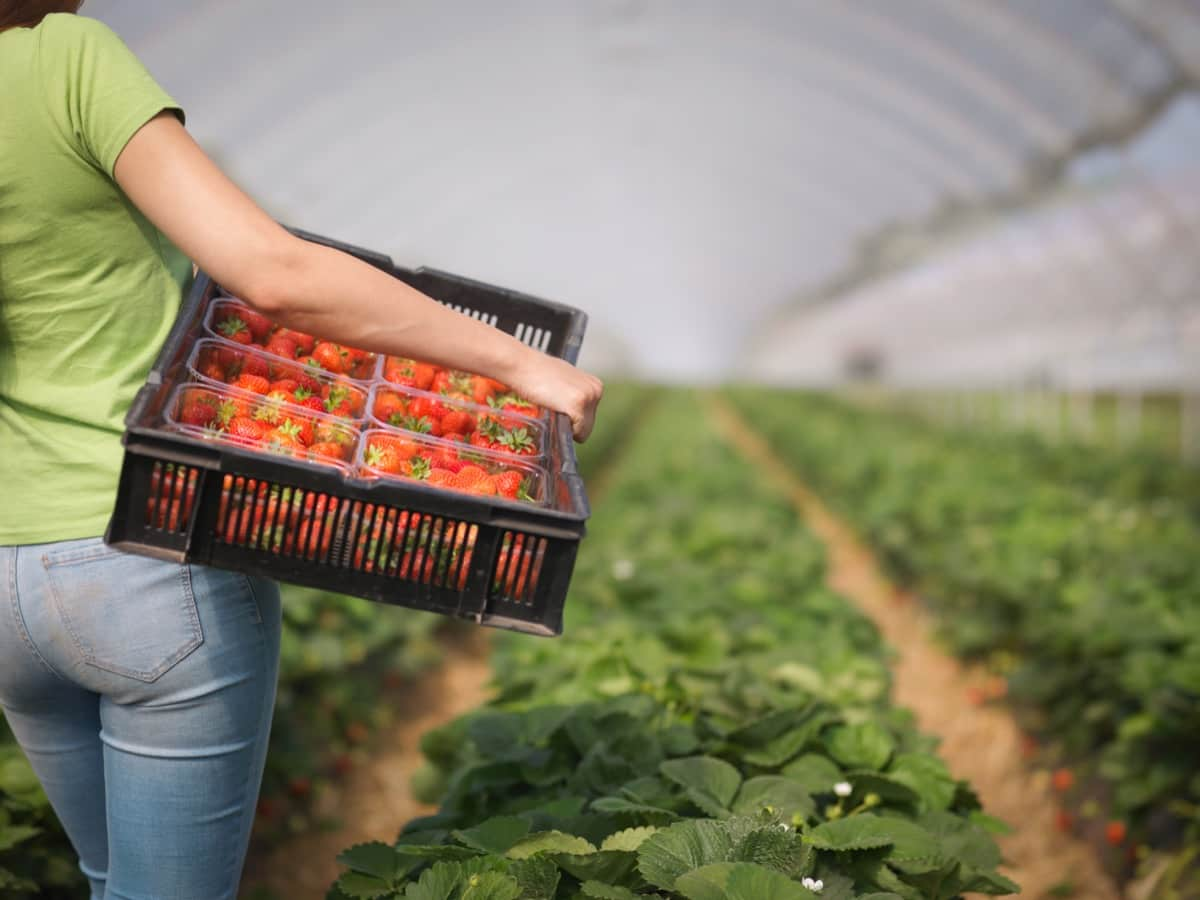
Conclusion
Polytunnels are an excellent option for those looking to extend their growing season and protect their crops from harsh weather conditions. They are relatively inexpensive, easy to construct, and can be used for various crops. Suppose you are a beginner or an experienced gardener. In that case, polytunnels offer a fun and effective way to explore the world of crop growing. With a bit of planning and suitable materials, you can have your Polytunnel up and running in no time. Happy gardening!
- Types of Pesticides Used in Agriculture: A Beginner’s Guide
- Economical Aquaculture: A Guide to Low-Budget Fish Farming
- 15 Common Planting Errors That Can Doom Your Fruit Trees
- How to Make Houseplants Bushy: Effective Tips and Ideas
- Innovative Strategies for Boosting Coconut Pollination and Yield
- Pollination Strategies for Maximum Pumpkin Yield
- The Complete Guide to Chicken Fattening: Strategies for Maximum Growth
- Natural Solutions for Tulip Problems: 100% Effective Remedies for Leaf and Bulb-Related Issues
- Revolutionizing Citrus Preservation: Towards a Healthier, Greener Future
- Natural Solutions for Peony Leaf and Flower Problems: 100% Effective Remedies
- Maximizing Profits with Avocado Contract Farming in India: A Comprehensive Guide
- Natural Solutions for Hydrangea Problems: 100% Effective Remedies for Leaf and Flowers
- The Ultimate Guide to Choosing the Perfect Foliage Friend: Bringing Life Indoors
- From Sunlight to Sustainability: 15 Ways to Use Solar Technology in Agriculture
- The Ultimate Guide to Dong Tao Chicken: Exploring from History to Raising
- The Eco-Friendly Makeover: How to Convert Your Unused Swimming Pool into a Fish Pond
- Mastering the Art of Delaware Chicken Farming: Essentials for Healthy Backyard Flocks
- 20 Best Homemade Fertilizers for Money Plant: DIY Recipes and Application Methods
- How to Craft a Comprehensive Free-Range Chicken Farming Business Plan
- Brighten Your Flock: Raising Easter Egger Chickens for Beauty and Bounty
- How to Optimize Your Poultry Egg Farm Business Plan with These Strategies
- Subsidy for Spirulina Cultivation: How Indian Government Schemes Encouraging Spirulina Farmers
- Ultimate Guide to Raising Dominique Chickens: Breeding, Feeding, Egg-Production, and Care
- Mastering the Art of Raising Jersey Giant Chickens: Care, Feeding, and More
- Ultimate Guide to Raising Legbar Chickens: Breeding, Farming Practices, Diet, Egg-Production
- How to Raise Welsummer Chickens: A Comprehensive Guide for Beginners
- How to Protect Indoor Plants in Winter: A Comprehensive Guide
- Ultimate Guide to Grow Bag Gardening: Tips, Tricks, and Planting Ideas for Urban Gardeners
- Guide to Lotus Cultivation: How to Propagate, Plant, Grow, Care, Cost, and Profit
- Agriculture Drone Subsidy Scheme: Government Kisan Subsidy, License, and How to Apply Online
- Ultimate Guide to Raising Araucana Chickens: Breed Profile, Farming Economics, Diet, and Care
- Bringing Hydroponics to Classroom: Importance, Benefits of Learning for School Students
- Ultimate Guide to Raising Polish Chickens: Breed Profile, Farming Economics, Diet, and Care
- Ultimate Guide to Raising Australorp Chickens: Profile, Farming Economics, Egg Production, Diet, and Care
- Silkie Chicken Farming: Raising Practices, Varieties, Egg Production, Diet, and Care
- Sussex Chicken Farming: Raising Practices, Varieties, Egg Production, Diet and Care